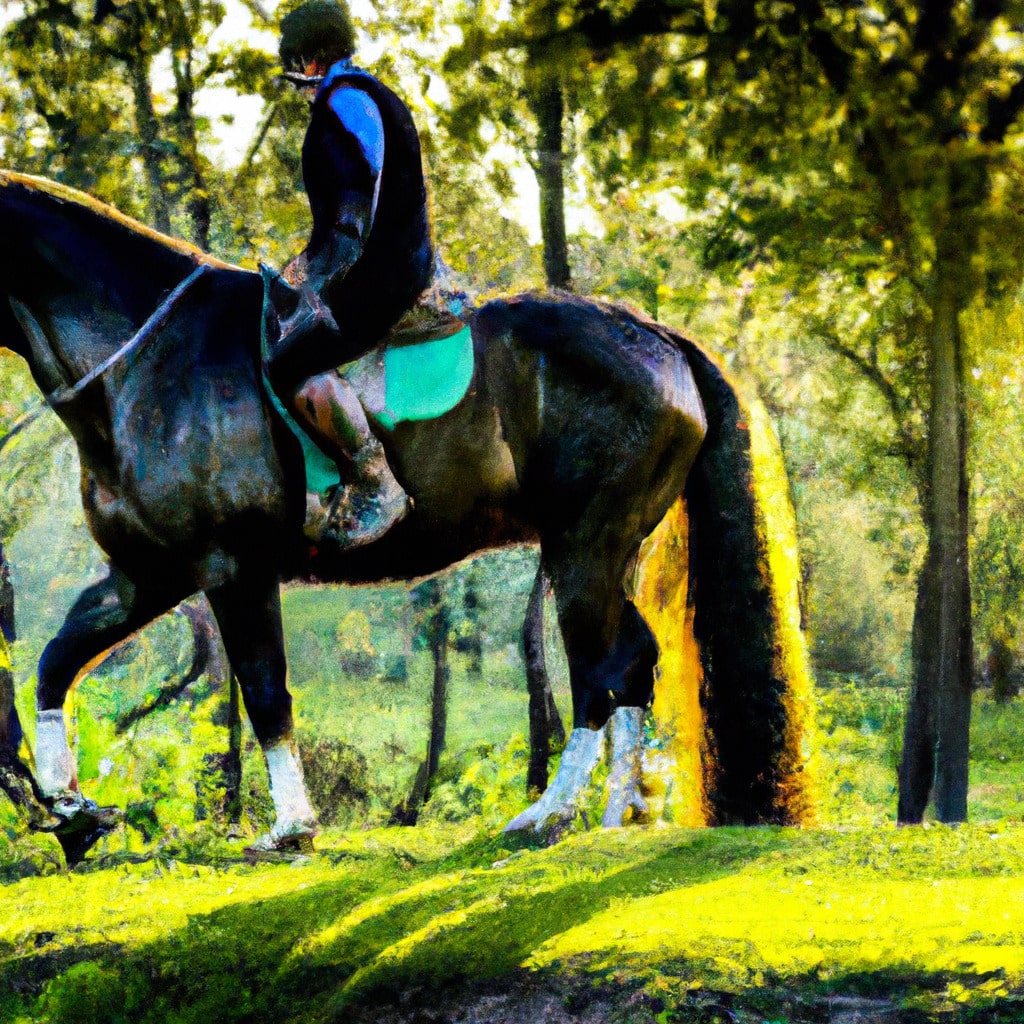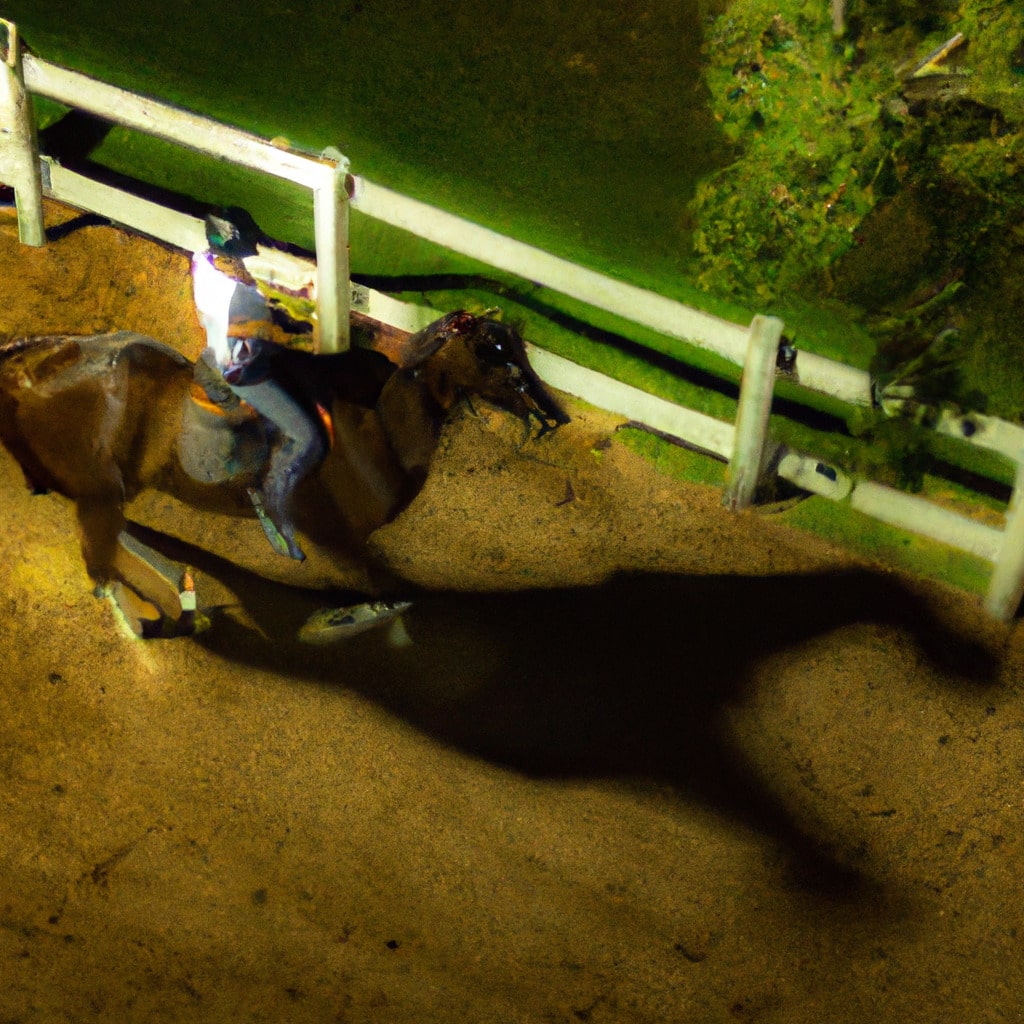Unveiling the Thrilling World of Horse Endurance Riding
Imagine embarking on a journey that tests the limits of both horse and rider.
A world where stamina, determination, and a deep bond between horse and human are the keys to success.
Welcome to the exhilarating realm of horse endurance riding.
In this unique equestrian sport, participants push themselves and their equine partners to the brink of their physical capabilities.
Covering vast distances across challenging terrains, endurance riding is a true test of endurance, strategy, and horsemanship.
Join us as we delve into the fascinating world of horse endurance riding, exploring its history, training techniques, and the incredible bond between horse and rider.
The Origins of Endurance Riding
Endurance riding has its roots in the ancient practice of long-distance horse travel. From the nomadic tribes of the Arabian Peninsula to the Native American tribes of North America, humans have relied on horses for transportation across vast distances. However, it wasn’t until the mid-20th century that endurance riding emerged as a formal sport.
The first organized endurance ride took place in California in 1955, where a group of equestrians set out to cover a distance of 100 miles in less than 24 hours. This event marked the birth of modern endurance riding as a competitive sport. Since then, the sport has gained popularity worldwide, with numerous national and international competitions held each year.
Endurance riding is not just about speed; it’s about the ability to maintain a steady pace over long distances. Riders and their horses must navigate through diverse terrains, including mountains, deserts, and forests. The sport requires careful planning and strategy, as riders must manage their horse’s energy levels and hydration throughout the ride.
One of the key aspects of endurance riding is the vet checks. These checkpoints are crucial to ensure the welfare of the horses. At each vet check, horses undergo a thorough examination by veterinarians who assess their overall health, soundness, and hydration levels. Horses that fail to meet the veterinary criteria are disqualified from the competition.
Endurance riding is a sport that celebrates the partnership between horse and rider. The bond between the two is built through hours of training, conditioning, and shared experiences on the trail. Riders must develop a deep understanding of their horse’s needs and capabilities to ensure their well-being throughout the ride.
In recent years, endurance riding has seen advancements in technology and equipment. Lightweight and durable saddles, specialized hoof boots, and high-tech GPS devices have become essential tools for riders. These advancements help enhance the comfort and safety of both horse and rider during long-distance rides.

Training for Horse Endurance Riding
Training plays a crucial role in preparing both horse and rider for the challenges of endurance riding. It involves a combination of physical conditioning, mental preparation, and building a strong partnership between horse and rider.
Physical fitness is paramount for both horse and rider in endurance riding. Horses need to develop stamina, strength, and cardiovascular endurance to cover long distances at a consistent pace. Riders, on the other hand, must work on their own fitness levels to endure the physical demands of the sport.
Endurance horses undergo a gradual training program that includes regular exercise, long-distance conditioning rides, and interval training. These training sessions help build the horse’s muscles, improve their cardiovascular fitness, and develop their ability to recover quickly.
In addition to physical training, mental preparation is equally important. Endurance riding requires riders to make split-second decisions, navigate unfamiliar terrains, and overcome challenges along the way. Developing mental resilience, focus, and a positive mindset are essential for success in this demanding sport.
Building a strong partnership between horse and rider is a key aspect of training for endurance riding. Trust, communication, and understanding are vital in maintaining a harmonious relationship on the trail. Spending time together, practicing various riding techniques, and participating in training rides help strengthen the bond between horse and rider.
Proper nutrition and hydration are also critical for endurance horses. A well-balanced diet, supplemented with electrolytes and other essential nutrients, ensures that the horse’s energy levels are sustained throughout the ride. Regular hydration breaks and access to clean water sources are essential to prevent dehydration and maintain the horse’s overall well-being.
Training for horse endurance riding is a continuous process that requires dedication, patience, and a deep love for the sport. It is a journey of growth and learning for both horse and rider, as they push their limits and discover the incredible capabilities of their partnership.
The Thrill of Endurance Riding Competitions
Endurance riding competitions offer a thrilling and challenging platform for riders to showcase their skills and test the capabilities of their horses. These events bring together equestrians from all walks of life, united by their love for the sport and the desire to push their limits.
One of the most prestigious endurance riding competitions is the Tevis Cup, held annually in California. Covering a distance of 100 miles through the rugged Sierra Nevada Mountains, the Tevis Cup is known for its grueling terrain and unpredictable weather conditions. Only the most skilled and prepared riders can conquer this ultimate test of endurance.
Another renowned endurance ride is the Mongol Derby, often referred to as the world’s longest and toughest horse race. Inspired by Genghis Khan’s ancient postal system, riders traverse 1,000 kilometers across the vast Mongolian steppe, changing horses every 40 kilometers. This multi-day race challenges participants both physically and mentally, as they navigate through remote landscapes and face the elements.
Endurance riding competitions are not limited to long-distance rides. There are also shorter distance rides, such as 50-mile and 75-mile races, which provide a stepping stone for riders who are new to the sport or horses that are still developing their endurance capabilities. These events offer a great opportunity for riders to gain experience, build confidence, and progress in their journey towards longer distances.
In endurance riding competitions, riders must carefully manage their horse’s pace and energy levels to ensure they complete the ride within the allotted time. Time penalties are incurred for finishing too early or too late, adding an element of strategy to the sport. Riders must also navigate through checkpoints and vet checks, where their horse’s health and well-being are assessed by veterinarians.
Endurance riding competitions foster a sense of camaraderie among participants. Riders often form bonds and support each other throughout the ride, sharing tips, stories, and encouragement. The endurance riding community is known for its welcoming and inclusive nature, making it a great sport for both competitive riders and those seeking a supportive and friendly environment.
Beyond the thrill of competition, endurance riding offers riders a unique opportunity to connect with nature and explore breathtaking landscapes. From traversing mountain ranges to crossing vast deserts, riders experience the beauty and serenity of the natural world in a way that few other sports can offer. The bond between horse and rider is further deepened as they face challenges together and overcome obstacles on the trail.
In conclusion, horse endurance riding is a captivating equestrian sport that combines physical stamina, strategic planning, and a deep bond between horse and rider. It is a sport that pushes both human and equine athletes to their limits, testing their endurance, resilience, and horsemanship skills.
Throughout history, humans have relied on horses for transportation and exploration. Endurance riding allows us to continue this age-old tradition, celebrating the incredible capabilities of these magnificent animals. It is a sport that brings together people from all walks of life, united by their love for horses and the thrill of the ride.
The journey of training for horse endurance riding is a continuous one, filled with challenges, triumphs, and personal growth. It requires dedication, patience, and a deep understanding of the horse’s needs and capabilities. Through hours of conditioning, mental preparation, and building a strong partnership, riders and their horses become a formidable team ready to take on any challenge.
Endurance riding competitions offer a platform for riders to showcase their skills and compete against the best in the sport. From the iconic Tevis Cup to the grueling Mongol Derby, these events test the limits of human and equine endurance, pushing participants to their physical and mental boundaries.
But beyond the thrill of competition, endurance riding is also about the connection with nature and the exploration of breathtaking landscapes. Riders have the opportunity to witness the beauty of the world from the back of a horse, forging a deep bond with their equine partner as they navigate through diverse terrains and overcome obstacles on the trail.
So, whether you are a seasoned equestrian looking for a new challenge or someone who simply appreciates the beauty and grace of horses, horse endurance riding offers an incredible journey of adventure, self-discovery, and the forging of an unbreakable bond between horse and rider.
Are you ready to embark on the thrilling journey of horse endurance riding?


